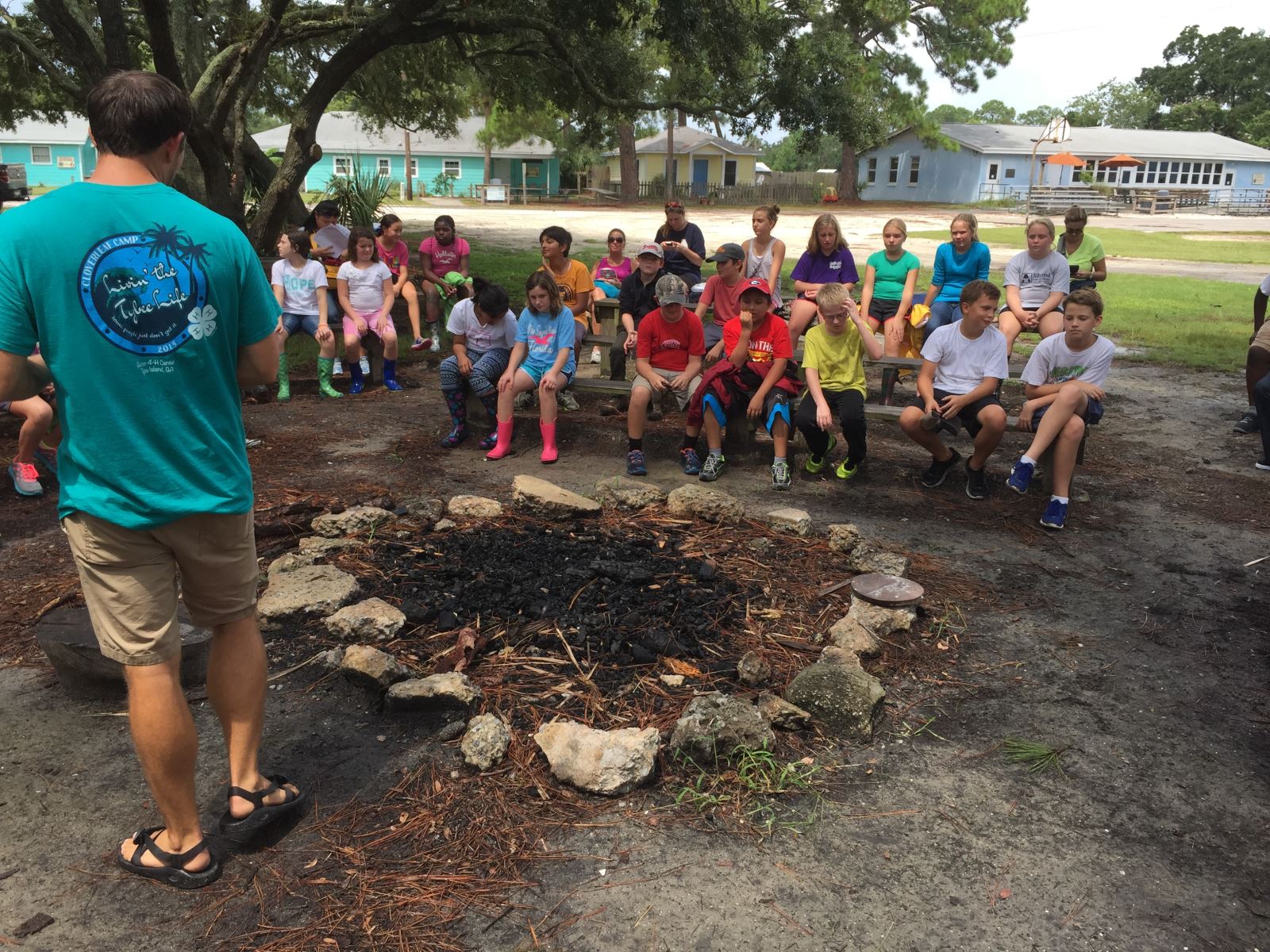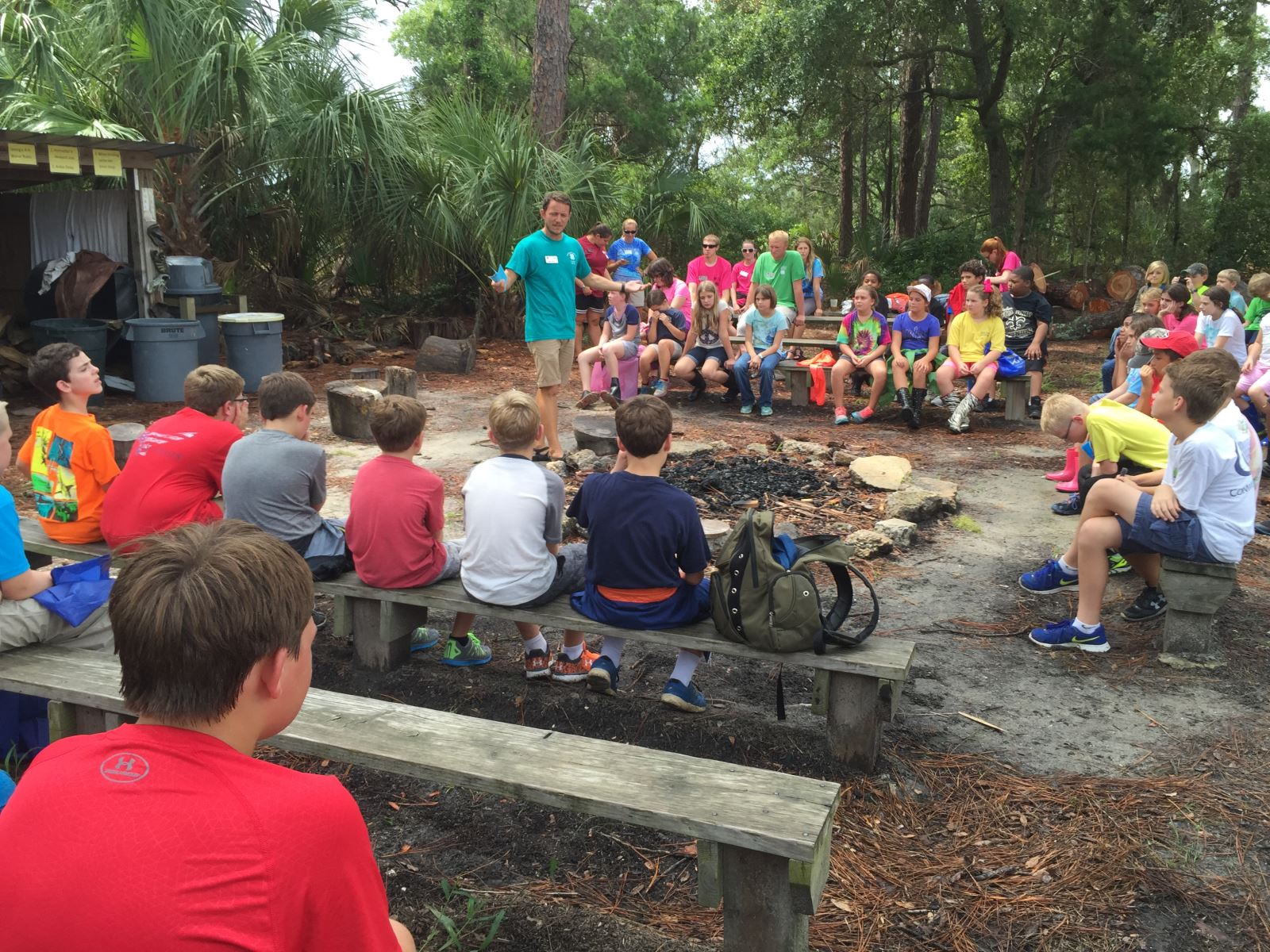Sixty fifth grade MERIT students of Thomas County Upper Elementary participated in the Burton Center Environmental Education Experience September 2-4, 2015. Located on six acres of Tybee Island, the Burton Center utilizes the entire 3 mile x .5 mile barrier island near Savannah for day and evening classes. Students were surrounded by biologically diverse tidal marshes and were within a short distance of the Atlantic Ocean.
The objectives of the Burton Center Environmental Education Program are to:
-
Develop an awareness, knowledge and appreciation for the natural environment.
-
Cultivate curiosity, critical reasoning and evaluation skills.
-
Develop positive relationships between students and their teachers.
-
Make the school program more meaningful by applying knowledge and skills required in the classroom to real-life situations.
-
Provide experiences in scientific processes, such as observing, measuring, classifying, etc.
-
Develop self-confidence and physical fitness.
-
Develop an appreciation for the local and natural history of an area.
Student classes included:
-
Beach Ecology was a class where students learned how beaches change over time through the processes of erosion and deposition, and what techniques people use for beach stabilization. Waves, sand and sea breezes are all important components in beach formation and a nice day at the beach!
-
Marsh Ecology allowed students to discover a very unique and biologically diverse habitat. The first half of the class took place at the Burton Center where students viewed plankton samples, walked out on the extensive dock to view various plants and animals living in the marsh, and learned how the moon and sun cause tidal fluctuations. The class concluded with students and adults walking in the salt marsh where they caught fiddler crabs, let periwinkle snails crawl on their hands, and learned how the marsh is critical for the survival for so many species.
-
Maritime Forest Ecology provided a study of the process of succession from the beach and marsh to the mature maritime forest. The Maritime Forest ecosystem plays a vital role to island ecology and is rich in biodiversity and ripe for study. This class took place entirely on a hike through the wonderfully preserved land of Fort Pulaski National Monument. Along the trail, students discovered many unique plants and animals on a Scavenger Hunt and learned about the role of each plant and animal in the island ecosystem.
-
Invertebrate Studies provided students the opportunity to view maritime creatures in motion under a microscope and then discuss additional invertebrates while visiting the on-site dock. While at the dock, students were able to view, collect, and discuss various invertebrate species. This class enabled students to examine the microscopic community that thrives on docks and rocks while learning to classify these animals in the correct phylum.
-
Fort Pulaski Tour offered students the opportunity to follow in the footsteps of revolutionary thinkers, great engineering minds, fearless commanders and thousands of workers and soldiers who built and fought for control of this massive fortress. Students toured this wonderfully preserved piece of Georgia and United States history. To assess their learning from a video and from touring the fort the students participated in a fun and active scavenger hunt through the fort. While visiting the fort students also saw an alligator that resides in the moat as he patiently waited for an egret to misstep and become his dinner. Luckily, the egret was smarter than the alligator and was not the alligator’s dinner.
-
Wednesday night’s Beach Walk incorporated various activities to enrich the student’s awareness of the beach at night. Students learned about nocturnal adaptations of humans and animals through active games and sensory activities. During the Night Walk students experienced a quiet reflective time to enjoy the peacefulness of the beach at night after a long, active day. Bioluminescent plankton was discovered on this dark night at the water’s edge and students developed an awareness of how rods and cones are used to produce night vision for humans.
These classes are aligned with the Georgia Learning Standards for Science, English Language Arts and Social Studies.
This three day-two night trip was coordinated by MERIT teacher Harold Singletary who accompanied parent chaperones Maria Bustle, Valerie Coley, Jamie Finch, Sherri Futch, Regina Jackson, Tina Prevatt, Teresa Thomas, and Dallas Williamson on the trip.


.JPG)
.JPG)